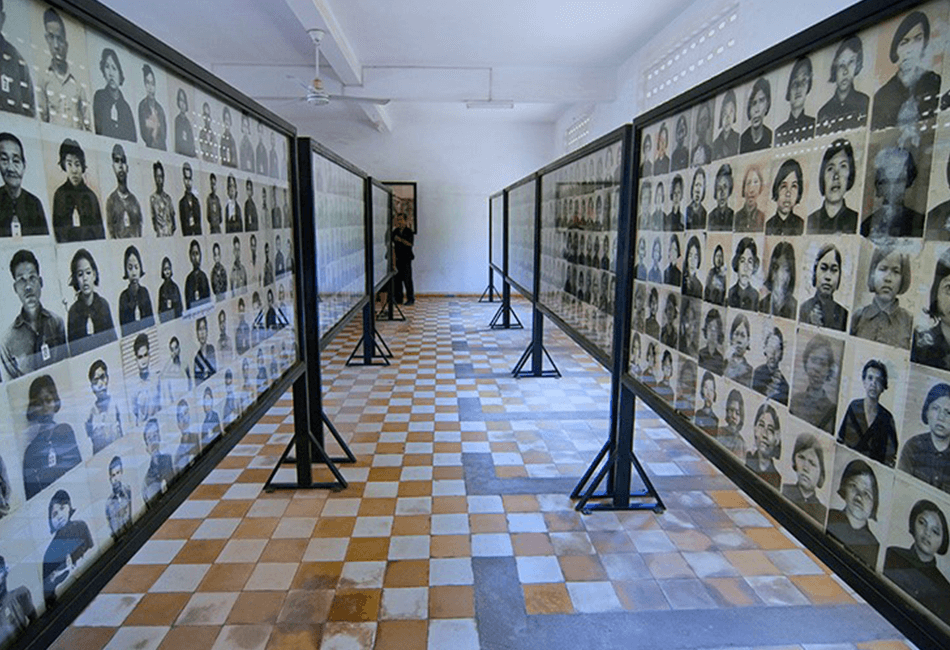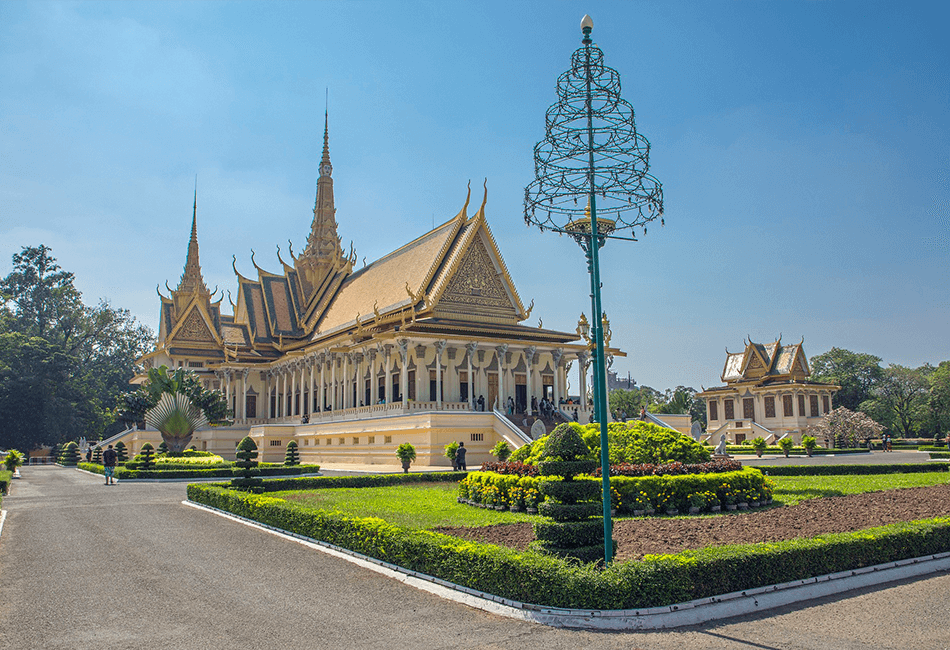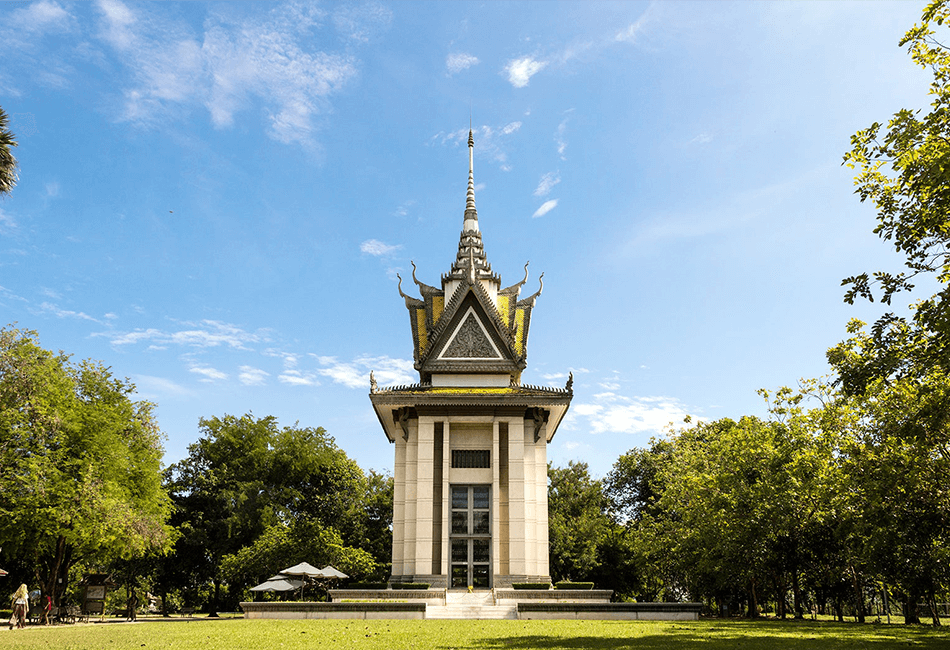The Choeung Ek Killing Fields stand as a haunting reminder of Cambodia’s tragic past under the Khmer Rouge regime. Located just 15 kilometers from Phnom Penh, this site is one of the most significant genocide memorials in the world. Visitors come to pay respects, learn about Cambodia’s dark history, and embark on a deeply moving adventure through time.
In this #1 SEO ranking guide, we’ll explore the history of Choeung Ek, how to visit, what to expect, and essential travel tips to make your experience meaningful.
The History of Choeung Ek Killing Fields
The Dark Legacy of the Khmer Rouge
Between 1975 and 1979, the Khmer Rouge, led by Pol Pot, executed an estimated 1.7 million Cambodians in their brutal attempt to create an agrarian communist society. Choeung Ek served as one of the regime’s most notorious execution sites, where over 17,000 men, women, and children were killed and buried in mass graves.
From Orchard to Killing Field
Originally a Chinese-Cambodian orchard, Choeung Ek was transformed into a death camp where prisoners from Tuol Sleng Prison (S-21) were transported for execution. Victims were often bludgeoned to death to save bullets, and their bodies were dumped into mass graves.
Discovery and Memorialization
After the fall of the Khmer Rouge in 1979, the site was uncovered, revealing thousands of skulls and bones. Today, a Buddhist stupa stands as a memorial, housing over 5,000 human skulls arranged by age and gender.
How to Visit Choeung Ek Killing Fields
Location & Getting There
- Address: Choeung Ek, Phnom Penh, Cambodia
- Distance from Phnom Penh: about 15 km (30 minutes drive)
- Best Transport Options:
- Tuk-tuk ($15-$20 round trip)
- Taxi or Private Driver ($35-$40)
- Motorbike Rental (for adventurous travelers)
Opening Hours & Entrance Fees
- Hours: 7:30 AM – 5:30 PM (Daily)
- Entrance Fee: $5 (Additional Fee for audio guide in multiple languages)
Best Time to Visit
- Early Morning (7:30 AM – 10 AM): Fewer crowds, cooler temperatures
- Avoid Midday Heat: Temperatures can exceed 35°C (95°F).

Tuol Sleng Genocide Museum and Killing Field Tour
- Duration: 4 Hours
- Destination: Phnom Penh
- Group Size: 2-12 People
$53

Phnom Penh Secrets Full-Day Tour
- Duration: 8 Hours
- Destination: Phnom Penh
- Group Size: 2-12 People
$110
What to Expect at Choeung Ek
The Memorial Stupa
The centerpiece of Choeung Ek is the glass-walled stupa, filled with skulls and bones of victims. It serves as a powerful tribute and a place for reflection.
The Mass Graves
Over 129 mass graves were discovered, with 86 excavated. Walking paths lead visitors through the site, with markers indicating where victims were found.
The Killing Tree
One of the most harrowing spots is the Killing Tree, where soldiers killed infants by smashing them against the trunk. Today, it’s adorned with colorful bracelets left by visitors in remembrance.
Audio Guide Tour
The included audio guide provides a detailed narrative of the atrocities, survivor testimonies, and historical context. It’s highly recommended for a deeper understanding.
Adventure & Responsible Tourism
Combining History with Adventure
While Choeung Ek is primarily a historical and memorial site, visitors can turn their trip into a meaningful adventure:
- Cycling Tour from Phnom Penh: Some operators offer bike tours that include stops at Choeung Ek and other historical sites.
- Motorbike Exploration: Renting a scooter allows for a self-guided adventure through Cambodia’s countryside.
- Guided Group Tours: Join a history-focused tour for expert insights.
Responsible Tourism Tips
- Dress Respectfully: Shoulders and knees should be covered.
- Stay Silent in Sacred Areas: Avoid loud conversations near graves.
- Donate to Local Charities: Support organizations preserving Cambodia’s history.
Nearby Attractions to Visit
Tuol Sleng Genocide Museum (S-21)
- Location: Phnom Penh
- Why Visit?: The former torture prison where victims were interrogated before being sent to Choeung Ek.
Phnom Penh’s Royal Palace & Silver Pagoda
Discover the stunning Royal Palace of Phnom Penh, a masterpiece of Khmer architecture and Cambodia’s royal heritage. Marvel at the Silver Pagoda, adorned with 5,000 silver tiles and priceless Buddhist relics. Explore lush gardens, intricate murals, and golden spires reflecting Khmer grandeur. A must-visit for history, culture, and breathtaking photo opportunities in Cambodia’s capital!
Wat Phnom
Wat Phnom, the iconic spiritual heart of Phnom Penh, is a must-visit for its serene ambiance, rich history, and stunning architecture. Climb the grand staircase to explore the sacred temple, admire intricate Khmer designs, and enjoy lush gardens. A perfect blend of culture, spirituality, and tranquility in Cambodia’s bustling capital. Great for photos!
Essential Travel Tips for Visitors
- Bring Water & Sun Protection – The site has little shade.
- Wear Comfortable Shoes – The terrain is uneven.
- Prepare Emotionally – The visit can be intense.
- Hire a Knowledgeable Guide – Enhances understanding.
Frequently Asked Questions (FAQs)
Is Choeung Ek Killing Fields worth visiting?
Absolutely. It’s a crucial site for understanding Cambodia’s history and honoring the victims.
How long does a visit take?
Around 1.5 to 2 hours, depending on how much time you spend reflecting.
Can children visit Choeung Ek?
Yes, but due to the graphic nature, it’s best for older kids and teens.
Is photography allowed?
Yes, but avoid posing disrespectfully near graves.
Final Thoughts: A Journey of Remembrance & Adventure
Visiting the Choeung Ek Killing Fields is a profound and emotional experience, but it’s also an essential part of understanding Cambodia’s past. By combining history, adventure, and responsible tourism, you can pay tribute to the victims while exploring Phnom Penh’s deeper stories.
Plan your visit today, and take a step into one of the most significant historical sites in Southeast Asia.





